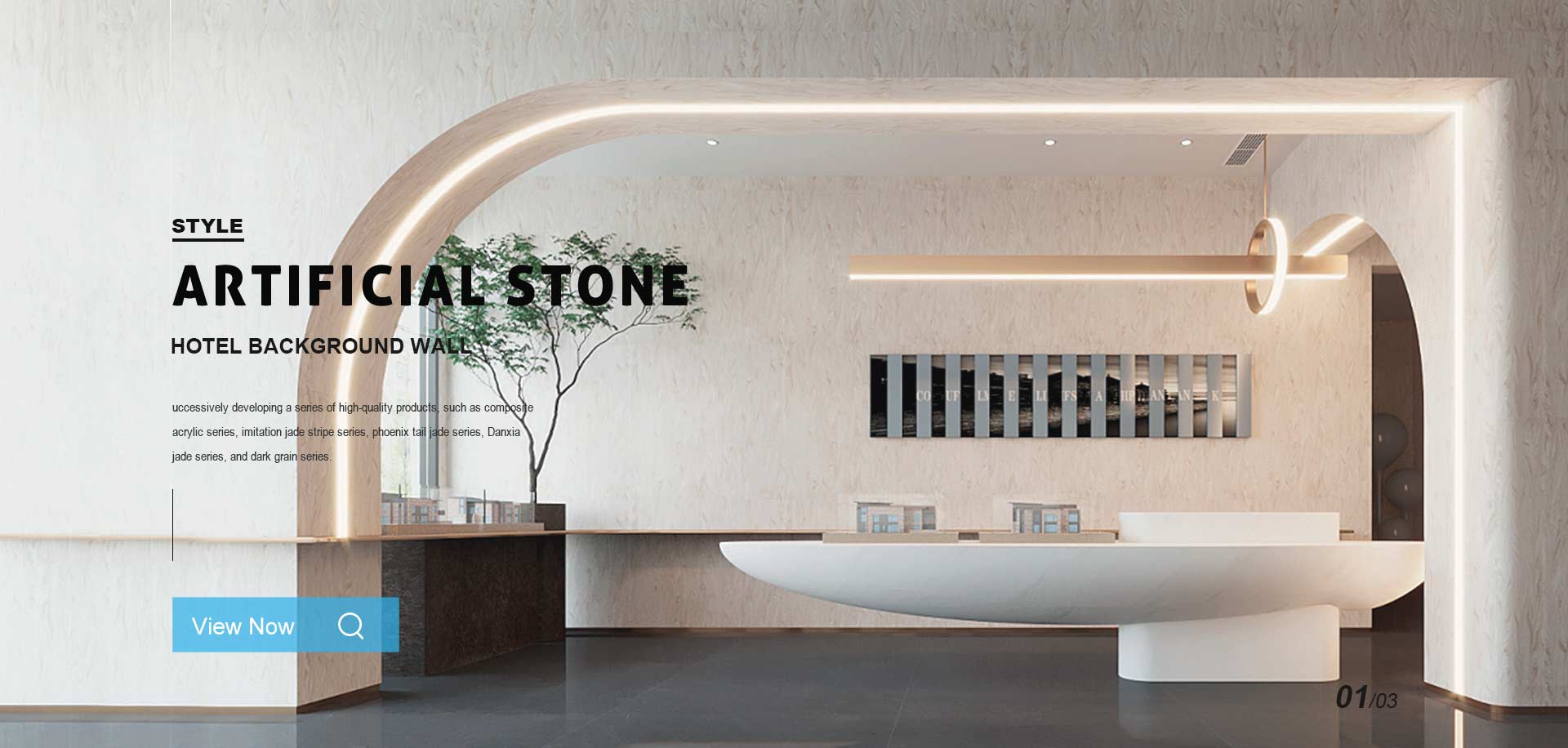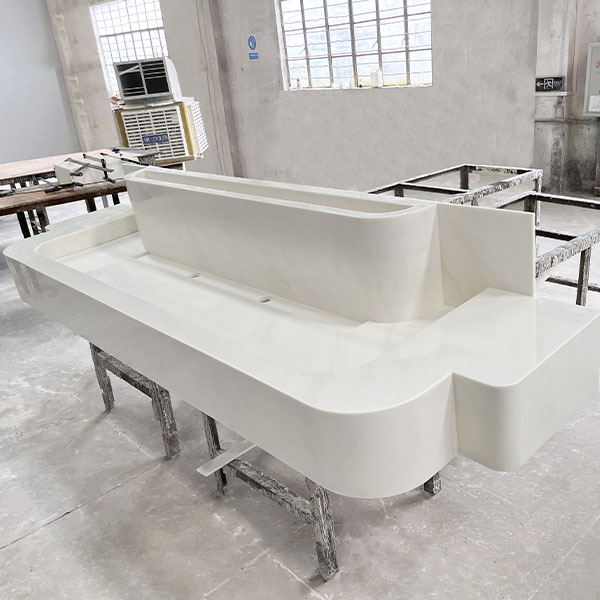
Artificial Marble countertops have become increasingly popular in both residential and commercial settings due to their aesthetic appeal, durability, and affordability. Beyond these practical advantages, artificial marble also stands out for its environmental benefits and contribution to sustainable practices in construction and design. This article explores the eco-friendly properties of Artificial Marble Countertops and highlights how they support a more sustainable future.

One of the key environmental benefits of artificial marble is its composition, which often includes recycled materials. Artificial marble, also known as engineered stone, typically consists of a mixture of natural stone fragments (such as marble dust) and resin binders. Many manufacturers use post-industrial stone waste in the production of artificial marble, reducing the demand for newly quarried stone.
By utilizing recycled materials, the production of artificial marble helps reduce the depletion of natural resources and minimizes the amount of waste sent to landfills. This approach supports the principles of a circular economy, where materials are continuously repurposed and reused, reducing the environmental footprint of the manufacturing process.
Traditional marble and natural stone countertops require extensive quarrying, which can have significant negative impacts on the environment, including deforestation, habitat destruction, and soil erosion. Additionally, quarrying processes consume vast amounts of water and energy, contributing to pollution and greenhouse gas emissions.
Artificial marble production, on the other hand, minimizes the need for large-scale quarrying. Since it is composed of crushed stone and synthetic resins, there is less dependence on extracting raw stone materials from the earth. This reduction in quarrying helps preserve natural landscapes and minimizes the disruption to ecosystems, making Artificial Marble Countertops a more environmentally responsible choice.
While the production of natural stone requires significant energy for extraction, transportation, and cutting, artificial marble manufacturing involves less energy-intensive processes. The stone particles used in artificial marble are often sourced locally or from nearby industrial operations, which reduces transportation-related emissions.
Moreover, the use of modern manufacturing techniques ensures that the energy consumption in the production of Artificial Marble Countertops is more efficient. Some manufacturers also invest in renewable energy sources to power their production facilities, further lowering the carbon footprint of the final product.
Artificial marble countertops are highly durable, resistant to scratches, stains, and heat, which ensures a long lifespan. Unlike natural stone, which may require frequent sealing and maintenance to maintain its appearance, artificial marble is relatively low-maintenance. Its resistance to wear and tear means that it will not need to be replaced as frequently, reducing the demand for new materials and further conserving natural resources.
The extended durability of artificial marble countertops also contributes to sustainability by reducing waste. When homeowners and businesses install countertops that last for decades, they reduce the frequency of renovations and replacements, minimizing construction waste that often ends up in landfills.
Many artificial marble countertops are made using non-toxic binders and resins that do not emit harmful volatile organic compounds (VOCs) into the indoor environment. VOCs can be detrimental to both human health and the environment, contributing to indoor air pollution and exacerbating respiratory conditions.
The use of low-VOC or VOC-free materials in artificial marble countertops helps create healthier indoor spaces, particularly in residential areas and workplaces where air quality is a priority. Additionally, choosing countertops made from environmentally safe components reduces the release of harmful chemicals during production, improving overall environmental safety.
At the end of their life cycle, artificial marble countertops can often be recycled or repurposed. Many manufacturers now offer take-back programs where old countertops can be returned for recycling into new products. The stone content in artificial marble can be crushed and reused in other building materials, contributing to the recycling economy and reducing the overall waste generated by construction and renovation projects.
In addition to recycling, artificial marble countertops can also be upcycled into other home improvement projects, such as flooring or decorative elements, giving them a second life and preventing them from ending up in landfills.
Artificial marble production can be designed to use less water compared to traditional stone-cutting processes. Many manufacturers adopt closed-loop water systems that recycle water used during production, drastically reducing water consumption. This approach not only conserves water but also reduces wastewater discharge, lowering the environmental impact on nearby water systems.
With increasing concerns over water scarcity and pollution, artificial marble's water-efficient production methods make it a more sustainable choice, particularly in regions facing water shortages.
Artificial marble countertops possess natural insulating properties, making them energy-efficient in everyday use. They help maintain stable temperatures in homes and buildings, which can contribute to reducing heating and cooling costs. This energy efficiency aligns with broader environmental goals of lowering energy consumption and greenhouse gas emissions.
In commercial buildings, where energy use can be substantial, the energy-efficient properties of artificial marble countertops can contribute to sustainable building certifications such as LEED (Leadership in Energy and Environmental Design).
Choosing artificial marble countertops can support green building standards and certifications, such as LEED. Because of their sustainable production methods, recyclability, and use of non-toxic materials, artificial marble countertops align with criteria for environmentally responsible building materials.
Incorporating eco-friendly materials like artificial marble can contribute to achieving higher sustainability ratings for residential and commercial projects, promoting a more responsible approach to construction and design.
Artificial marble countertops offer a wide range of design possibilities, imitating the natural beauty of stone without the environmental cost of mining and quarrying. Homeowners and designers can choose from various colors, patterns, and textures that replicate the look of marble, granite, or other natural stones, all while knowing that their choice is environmentally responsible.
By opting for artificial marble, consumers can enjoy the luxurious appearance of natural stone without contributing to the environmental degradation caused by traditional stone extraction and processing.
Artificial marble countertops present a compelling option for those seeking to reduce their environmental impact without sacrificing style or functionality. Through the use of recycled materials, reduced quarrying, energy-efficient production, and durability, artificial marble contributes to sustainability in significant ways. Whether in terms of recyclability, non-toxic components, or water conservation, artificial marble countertops align with the growing demand for eco-friendly building materials. By choosing artificial marble, individuals and businesses alike can make a positive contribution to a more sustainable future.